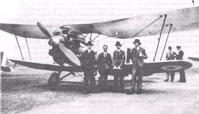


Early Years in the Bureau
Introduction
My Early Years in the Bureau of Meteorology
The Formation of the Frosterley Club
Attachment A
Attachment B
Attachment C
Attachment D
Attachment E
Attachment F
Attachment G
Attachment H
Attachment I
Index
Search
Help
Contact us

There were lectures in the morning until 1.00 pm and practical work in the afternoon. Practical work consisted of plotting observations and drawing (or learning to draw) synoptic charts. The lecturers included Mr Treloar who lectured instruments. In the afternoon Mr Newman would call out both surface and upper air observations which we plotted on synoptic charts. We also plotted upper air temperature diagrams, in those days the tephigram. The surface observations were encoded in a new international code. However at that time most observations in Australia were transmitted in a word code in which each word represented a specific meteorological element It became necessary for us to obtain some knowledge of the Australian word code which caused great amusement and hilarity. For example 'sex' decoded as 'hot wind'. At this stage there had been no formal training of observers in the Bureau. Surface observations in general were taken by postmasters, police or other interested residents. Only the upper wind observations were taken by Bureau staff who had learn by practical experience how to make these observations. In the same manner we learnt to make surface observations by accompanying staff from the weather room to the Royal Society Grounds to take the 9.00 am and 3.00 pm observations. I had been very fortunate in having six weeks in the Bureau in the Head Office before the course started and from 9.00 to 10.00 am I continued to work in the research department recording by phone or telegram the upper air temperature soundings conducted by RAAF aircraft at Laverton near Melbourne and at Richmond near Sydney. I plotted the tephigrams and gave them to Mr Treloar who used them in discussions in the Forecast Board. Treloar did not commence his lectures until after 11.00 am. Earlier lectures were given either by John Hogan or Allan Cornish. Cornish gave us a good grounding in meteorological instruments. Hogan was an efficient and pleasant lecturer. He spent some time with Newman taking us out to Laverton to see the aeroplane flown by Dick Cohen, to make temperature soundings of the upper air. Dick Cohen was a RAAF Flying Officer and Willis Reeves was an airline pilot who after the course went to the then infant Department of Civil Aviation.

People in Bright Sparcs - Cohen, Dick (Kingsland); Cornish, Allan William; Hogan, John; Hogan, John (Doc); Lillywhite, John Wilson; Newman, Bernard William (Bernie); Treloar, Harry Mayne
 |
Bureau of Meteorology |  |
© Online Edition Australian Science and Technology Heritage Centre and Bureau of Meteorology 2001
Published by Australian Science and Technology Heritage Centre, using the Web Academic Resource Publisher
http://www.austehc.unimelb.edu.au/fam/0178.html